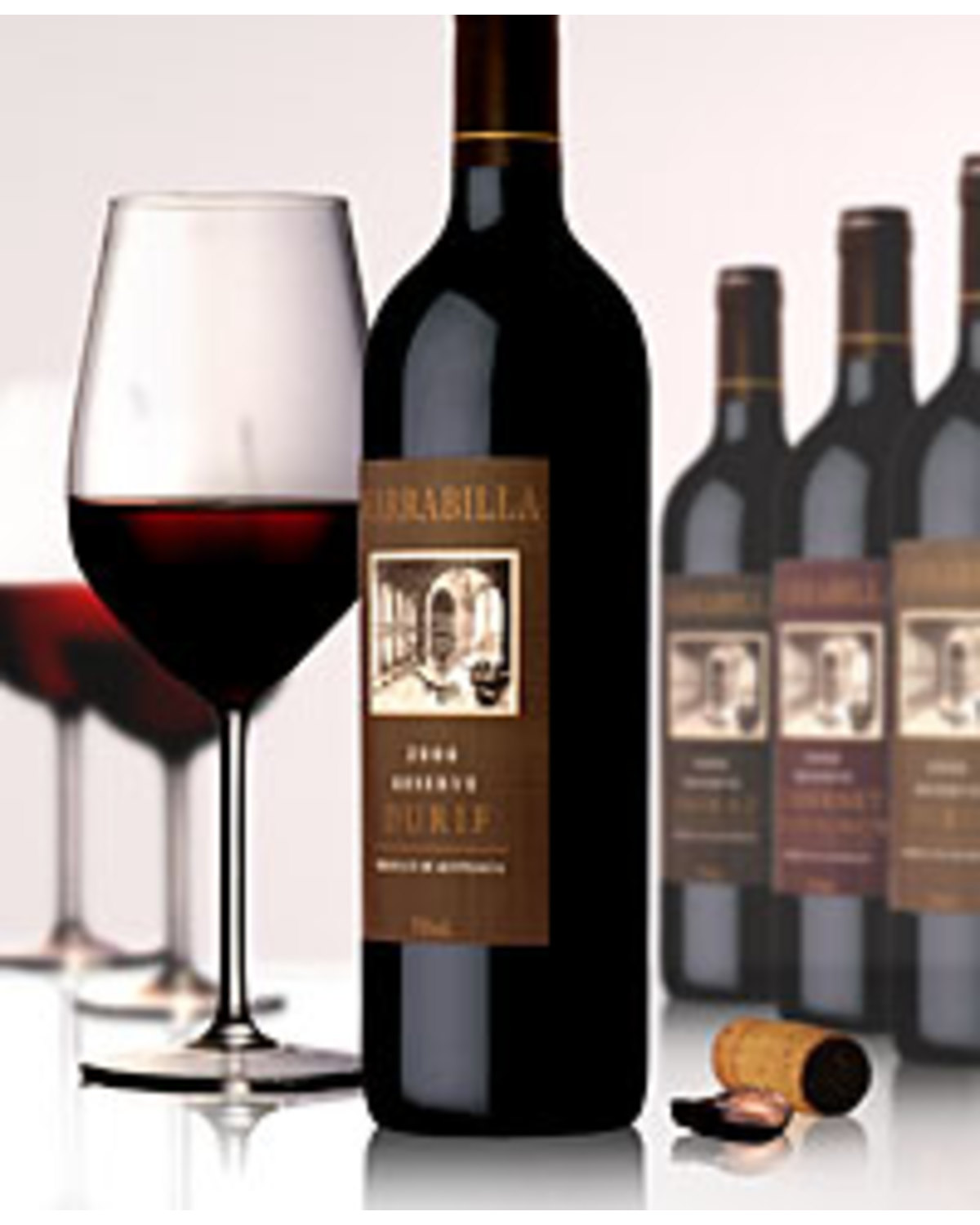
- 98
2006 Warrabilla Reserve Durif
THE 2006 WARRABILLA COLLECTION A HIPPO IN A TUTU LAUNCHES VINOUS ATOMIC BOMBS
'IN SPITE OF THEIR 'OBESITY', THESE WINES DANCE ON THE PALATE LIKE AN AGILE PRIMA BALLERINA'.
The 2006 Warrabilla Reds from Rutherglen reach new heights. Firstly, they are bigger, bolder yet more refined than previous vintages. Secondly the alcohol content has reached a staggering 18% on the Parola’s Durif. Lastly, and most importantly, they remain balanced.
This is the great paradox of Australian reds – their ability to achieve a super ripe state without being porty or displaying the dreaded dead fruit characteristics. To understand this paradox, one has to appreciate the uniqueness of Australian terroir. Going back to the 60’s (the good old days of low alcohol reds?) the maturity index of grapes was measured in Brix – for example, harvesting Shiraz at 23 Brix would be quite common. Divide this number by 1.8 and one gets the potential alcohol of the finished wine as 12.7% Alc/Vol.
The use of the maturity index lost its support amongst winemakers when the French discovered that tannins and anthocyanins in red grape skins were polymerising while still on the vine – getting a bit technical but above a certain molecular weight soft tannins and mouthfeel were developing, while below that weight one got chalky and astringent tannins. So the new wave was to pursue flavours and not numbers. But some winemakers were, and still are promoting green wine. An article published in the December 2000 issue of Atlantic Monthly related to breaking the Bordeaux Cartel “which has been working with the English press for decades to palm off unripe wines on the public.”
Andrew Sutherland-Smith, winemaker at Warrabilla, states “our wines are made in the vineyard. Our soils are deep red clay loams. The rows are 4 metres wide (standard Aussie width is 3 metres) and this gives us plenty of light and air to colour, ripen fully and give us the profiles we’re after. Crops are pretty light at around 1.5 tonnes per acre.” The rate of fruit ripening is very dependant upon temperature, therefore, the more uniform the fruit zone environment, the more uniform the maturation of the fruit, with 75% of the quality coming from delivering uniformly ripe fruit to the winery. Andrew maintains “It’s all about light. The vertically, shoot positioned trellis maximizes it, while giving a bit of protection from excessive heat and sunburn. We do taste berries, looking for black/red fruit characters whilst avoiding excess shrivel and the dreaded dead fruit characters. Brown seeds and stalks are woody, not green and give softer tannins.”
As to wine writers who tend to dismiss fruit bombs as over ripe, Smith makes the comment “The only thing worse than a mean, green wine is a mean, green wine writer. It's not just about alcohol, it’s about the black phase fruits that develop late in the season. It’s a different profile.” His final words of wisdom “Frankly, so long as the wine is in balance, we don’t care whether it’s 14% or 18% - it’s just got to have balance.”
Tasting Note: A behemoth. At a generous 16% alcohol, this wine delivers the lot and would seem impossible to topple (that's until one tastes the 2006 Limited Release Parola’s Durif). Andrew Sutherland-Smith has developed a strong reputation for these Rutherglen reds, the Durifs being the 'piece de resistance'. Totally opaque black purple colour with paint like cling to the glass walls. This paint like structural quality is common to all Warrabilla reds. Top note of morello cherries, vanilla, plum and liquorice allsorts. The detractors of these big wines will argue that at 16% alcohol you can get that burning sensation that a whiskey or brandy drinker experiences. This is far from the case! These wines in spite of their obesity, dance on the palate like an agile prima ballerina. Flavours of spice, black cherry, chocolate and liquorice. Very strong spicy back palate. Fine grained, perfectly balanced tannins. Very long aftertaste of vanilla, plum, morello cherries and confectionary.
Cellar 4-5 years (2011-2012)
Alc/Vol: 16%

 CLICK HERE to read more comments from winemaker, Andrew Sutherland-Smith
CLICK HERE to read more comments from winemaker, Andrew Sutherland-Smith
to most of Australia
